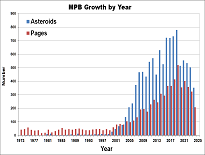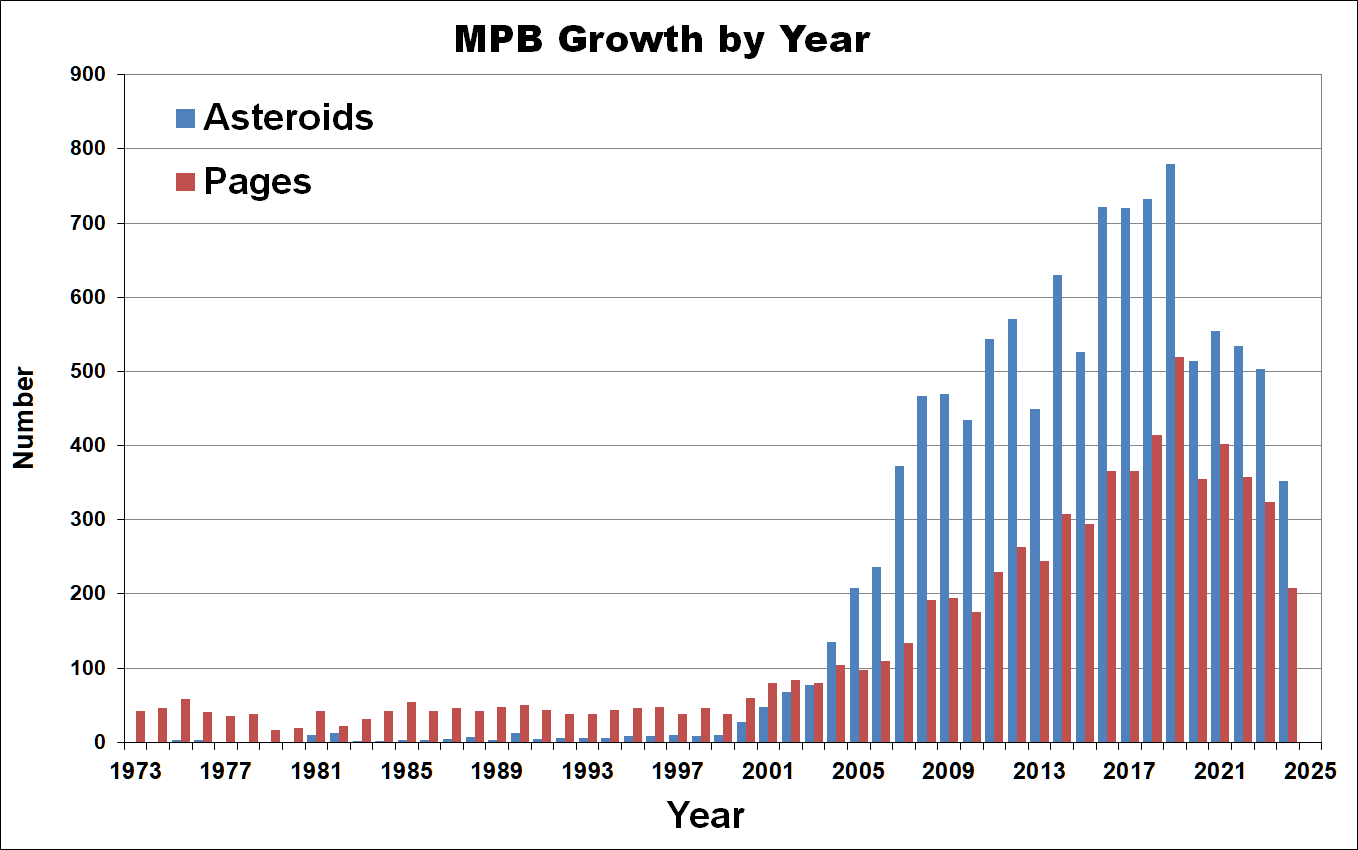BULLETIN OF THE MINOR PLANETS SECTION OF THE ASSOCIATION OF LUNAR AND PLANETARY OBSERVERS

|
The Minor Planet Bulletin is the journal for almost all amateurs and even some professionals for publishing
asteroid photometry results, including lightcurves, H-G parameters, color indexes, and shape/spin axis models.
It is considered to be a refereed journal by the SAO/NASA ADS.
All MPB papers are indexed in the ADS.
Print subscriptions are no longer available to individuals. Institutions (e.g., college libraries) can still obtain print copies via a special subscription. See details in MPB 37-4 or contact the editor, Richard Binzel. Annual voluntary contributions of $5.00 or more in support of the publication are welcome. Minor Planet Bulletin Authors Guide and Word Templates (v.3.0: updated 2024 February 2) The ZIP file contains the Authors Guide PDF as well as a "starter" paper in Word 2007+ (DOTX). Those using Word 97 (DOC/DOT) are encouraged to download OpenOffice and convert their files to the most recent Word format (DOCX). Please read this updated guide since there are a number of changes from previous guides.
Cumulative Index to Volumes 1-45 Cumulative Asteroid Lightcurve Index (Volumes 1 through 51-2) |
